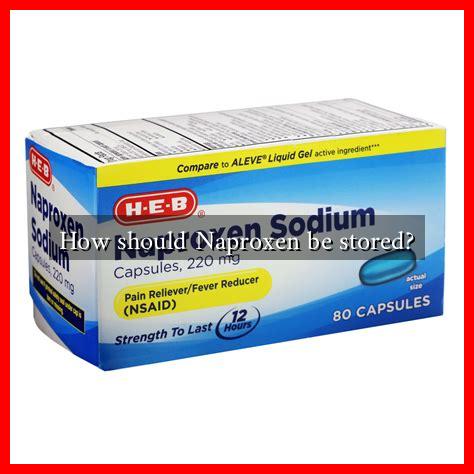-
Table of Contents
How Should Naproxen Be Stored?
Naproxen is a nonsteroidal anti-inflammatory drug (NSAID) commonly used to relieve pain, reduce inflammation, and lower fever. It is often prescribed for conditions such as arthritis, menstrual cramps, and other acute pain situations. However, proper storage of Naproxen is crucial to ensure its effectiveness and safety. This article will explore the best practices for storing Naproxen, the consequences of improper storage, and tips for maintaining its integrity.
Understanding Naproxen
Naproxen is available in various forms, including tablets, liquid suspensions, and topical formulations. It is essential to understand that each form may have specific storage requirements. According to the Drugs.com, Naproxen is typically prescribed in doses ranging from 250 mg to 500 mg, depending on the condition being treated.
Optimal Storage Conditions
To maintain the efficacy of Naproxen, it should be stored under the following conditions:
- Temperature: Naproxen should be stored at room temperature, ideally between 20°C to 25°C (68°F to 77°F). Extreme temperatures can degrade the medication.
- Humidity: Keep Naproxen in a dry place. High humidity can lead to the degradation of the drug, especially in tablet form.
- Light Exposure: Store Naproxen in its original container, away from direct sunlight. Light can affect the chemical composition of the medication.
- Child Safety: Always store Naproxen out of reach of children to prevent accidental ingestion.
Consequences of Improper Storage
Improper storage of Naproxen can lead to several issues:
- Reduced Efficacy: Exposure to heat, moisture, or light can cause the medication to lose its potency, making it less effective in treating pain and inflammation.
- Increased Side Effects: Degraded medications may lead to unexpected side effects or adverse reactions.
- Health Risks: Consuming expired or improperly stored medications can pose serious health risks, especially for individuals with pre-existing conditions.
Best Practices for Storing Naproxen
To ensure that Naproxen remains effective and safe, consider the following best practices:
- Check Expiration Dates: Regularly check the expiration date on the packaging and dispose of any expired medications properly.
- Use Original Packaging: Always keep Naproxen in its original container, which is designed to protect it from environmental factors.
- Avoid Bathroom Storage: Bathrooms often have high humidity levels, making them unsuitable for storing medications. Instead, choose a cool, dry place.
- Travel Considerations: If traveling, keep Naproxen in a temperature-controlled environment, such as a cooler bag, to prevent exposure to extreme temperatures.
Case Studies and Statistics
A study published in the National Institutes of Health highlighted that improper storage of medications, including NSAIDs like Naproxen, can lead to a significant decrease in their effectiveness. The study found that 30% of participants reported storing medications in bathrooms, leading to increased humidity exposure.
Furthermore, a survey conducted by the American Pharmacists Association revealed that nearly 50% of individuals do not check expiration dates regularly, which can lead to the consumption of ineffective medications.
Conclusion
Proper storage of Naproxen is essential for maintaining its effectiveness and ensuring patient safety. By adhering to recommended storage conditions—keeping it at room temperature, away from humidity and light, and out of reach of children—individuals can maximize the benefits of this medication. Regularly checking expiration dates and avoiding improper storage locations can further enhance safety. Remember, when in doubt, consult a healthcare professional for guidance on medication storage.


